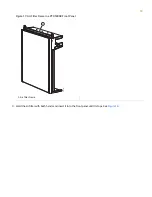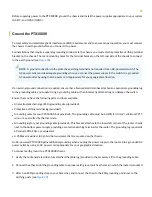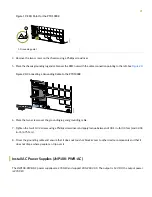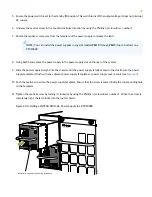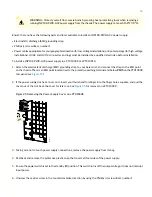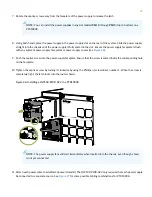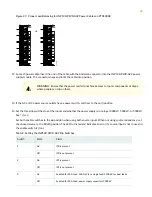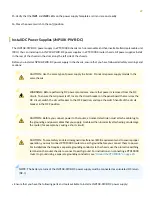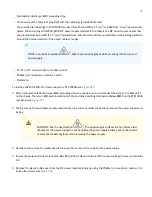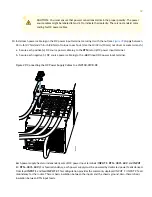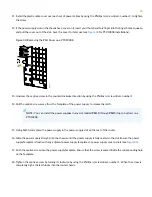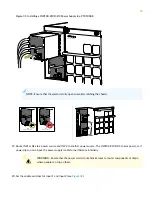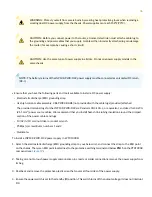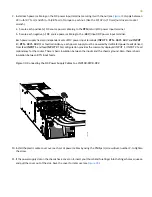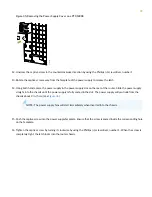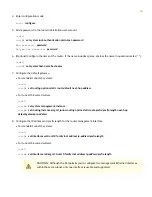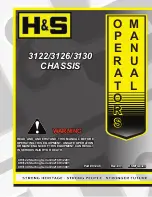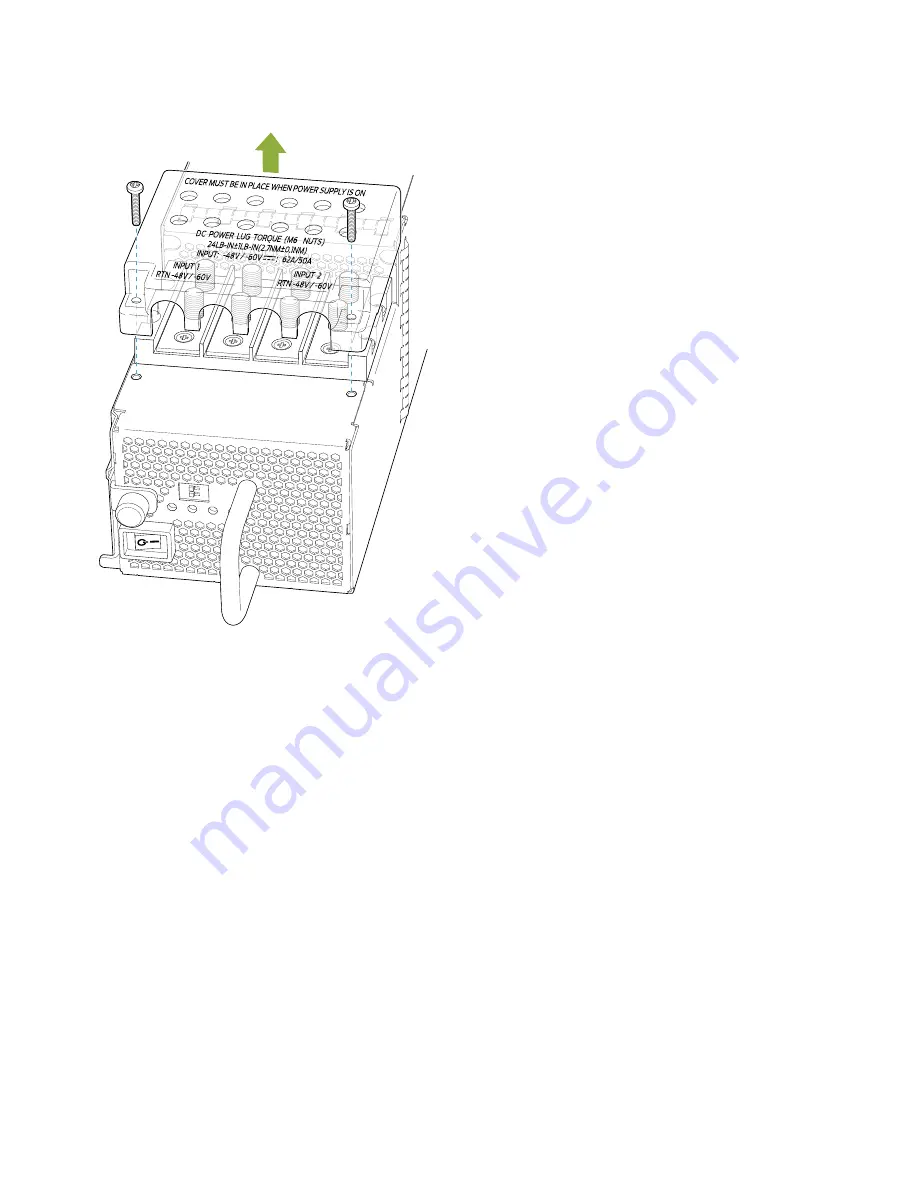
Figure 28: Removing the Plastic Cable Cover on a JNP10K-PWR-DC Power Supply
g050629
6. Remove the nuts from each DC power input terminal, using the 13/32 in. (10 mm) nut driver or socket wrench to
loosen the nuts.
7. Ensure that the power source circuit breaker is open so that the voltage across the DC power source cable leads is
0 V and that the cable leads do not become active while you are connecting DC power.
8. Install a power lug on each DC power cable. Ensure the lug meets the double hole standard lug terminal for 4 AWG
wire. The lugs should be dual, 1/4 in. spaced 5/8 in. apart. The terminal must accommodate double hole standard lug
terminal for 4 AWG or larger wire.
9. Verify that the DC power cables are correctly labeled before making connections to the power supply. In a typical
power distribution scheme where the return is connected to chassis ground at the battery plant, you can use a multimeter
to verify the resistance of the –48V and RTN DC cables to chassis ground:
•
The cable with very high resistance (indicating an open circuit) to chassis ground is negative (–) and will be installed
on the –48V (input) DC power input terminal.
•
The cable with very low resistance (indicating a closed circuit) to chassis ground is positive (+) and will be installed
on the RTN (return) DC power input terminal.
31


